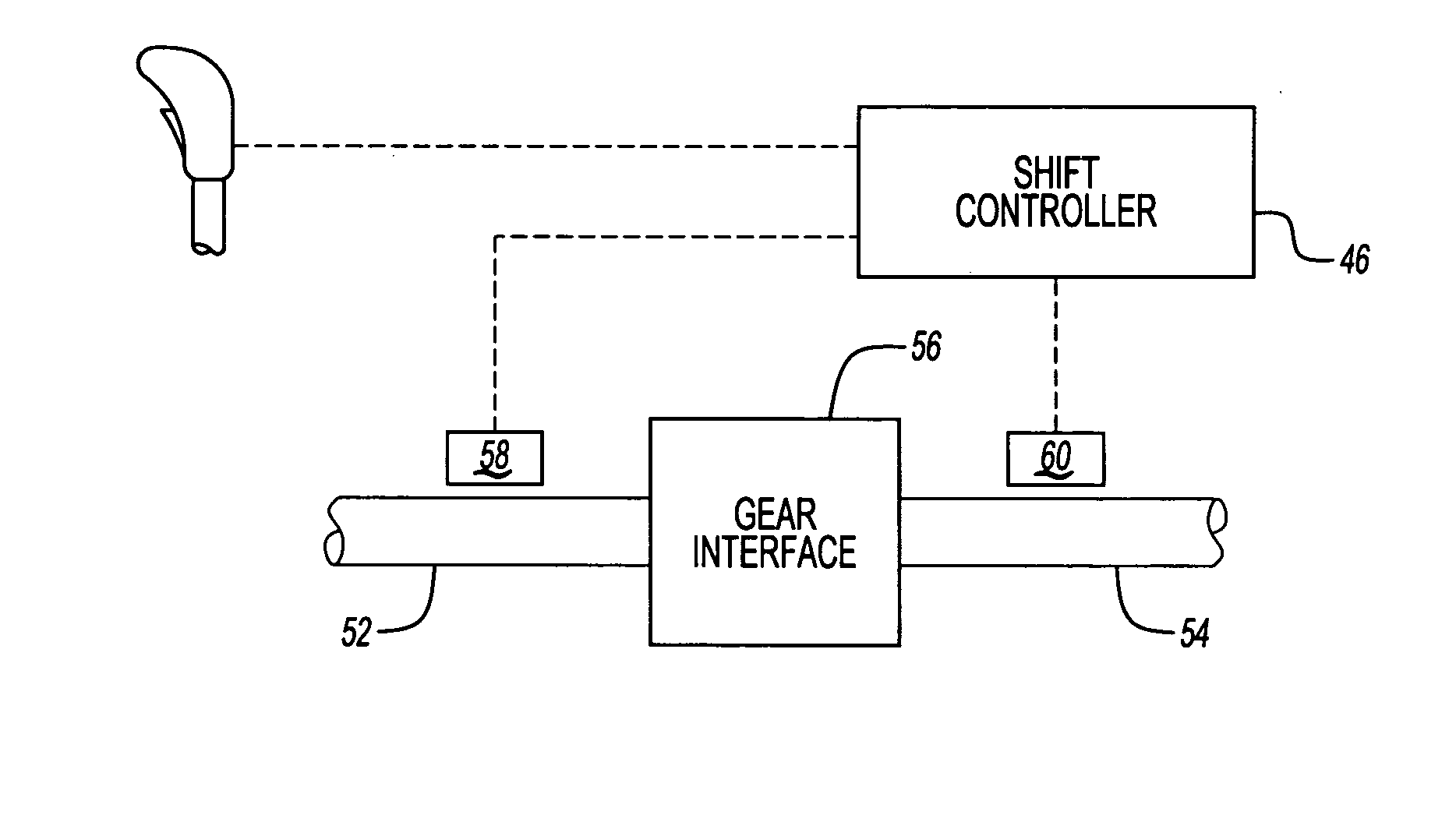Automated mechanical transmission system
a transmission system and automatic technology, applied in the direction of gearing control, gearing element, belt/chain/gearing, etc., can solve the problems of reducing the longevity of the absolute torque, relatively complicated sensing of absolute torque,
- Summary
- Abstract
- Description
- Claims
- Application Information
AI Technical Summary
Benefits of technology
Problems solved by technology
Method used
Image
Examples
Embodiment Construction
[0018]FIG. 1 diagrammatically illustrates a vehicle driveline 20 incorporating an engine 22 driving a clutch mechanism 24. The clutch mechanism 24 is selectively engaged to transmit power from the engine 22 into an automated mechanical transmission system 26. The clutch 24 can be a “dry clutch” or a “wet clutch”, a centrifugal clutch, releaser clutch, or any other known clutch mechanism.
[0019] The transmission 26 includes an input shaft 28 that is rotationally driven by the engine 22, a main section 30, an auxiliary section 32, and an output shaft 34 that rotatably drives one or more wheels 36 of the vehicle. As is well known, the main section 30 provides a first plurality of gears ratios 38, while the auxiliary section 32 provides a second plurality of gear ratios 40.
[0020] The transmission is shown schematically, and such automated transmissions are known in the art. Although this invention will be described in the context of a range type auxiliary section, it will be appreciate...
PUM
 Login to View More
Login to View More Abstract
Description
Claims
Application Information
 Login to View More
Login to View More - R&D
- Intellectual Property
- Life Sciences
- Materials
- Tech Scout
- Unparalleled Data Quality
- Higher Quality Content
- 60% Fewer Hallucinations
Browse by: Latest US Patents, China's latest patents, Technical Efficacy Thesaurus, Application Domain, Technology Topic, Popular Technical Reports.
© 2025 PatSnap. All rights reserved.Legal|Privacy policy|Modern Slavery Act Transparency Statement|Sitemap|About US| Contact US: help@patsnap.com



